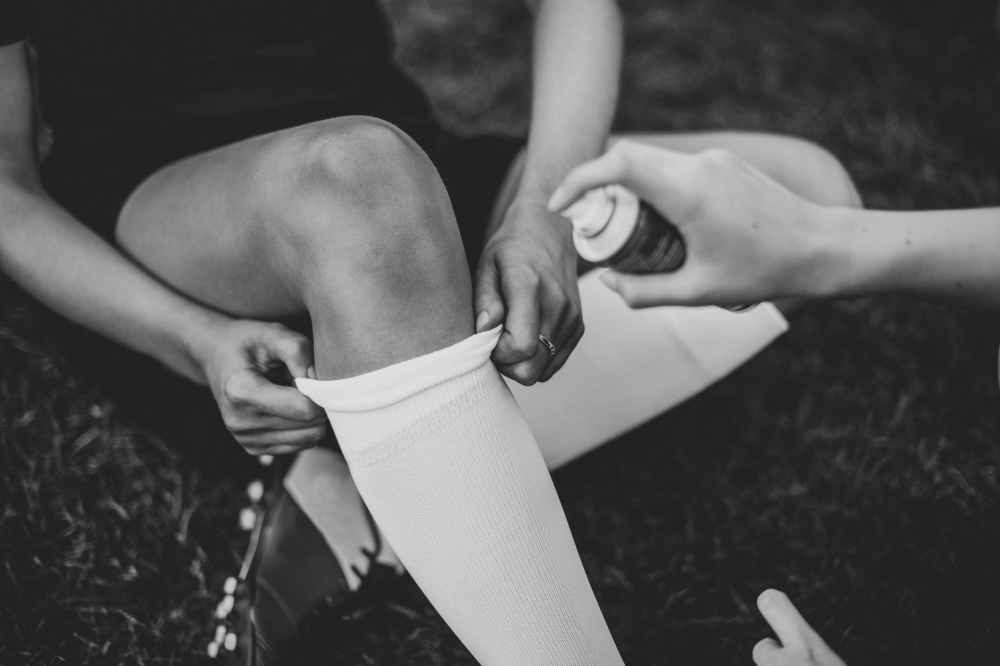When you are young, it is easy to forget how important your joints are for your overall quality of life. Your joints are what allow your skeleton to bend, as your joints are located where at least two bones meet one another. This bending is what allows you to perform everyday tasks. Without joints, you would be one cohesive group of bones, unable to participate in your environment.
Joints also consist of cartilage that lines each end of the bones. Cartilage is important in cushioning the bones in your joints. This cartilage can break down, as is the case in the development of osteoarthritis (which you may hear referred to as “wear and tear” arthritis).
Unfortunately, it is easy to neglect your joints, but you may pay the price as you age. That is why it is important to start looking after your joints at an early age so that they will be there to support and serve you for years to come.

Here are some helpful tips to keep your joints healthy:
Protect your joints
Some activities are harder on your joints than others or pose a greater risk of injury. For example, sparring in martial arts puts your joints at risk of injuries. Repeated jogging on pavement also increases the risk of damage to your joints and cartilage.
It is therefore wise to choose low-impact exercises such as swimming, walking, or cycling. However, if you will be participating in higher-risk activities, be aware of the potential for damage to occur to your joints, and do your best to protect your joints. You can do this by wearing protective gear such as elbow pads, knee pads, or knee braces.
In addition, be sure to use your larger joints such as your elbows and shoulders to carry your purse, instead of your smaller hand joints.
If you are injured, be sure to stop the activity and seek treatment in order that you can prevent further damage to your joints.
Lose weight
Excess weight is especially detrimental to your weight-bearing joints in your legs (knees, hips, ankles). This can become a vicious cycle if not dealt with. In other words, you gain weight, your joints are sore, and so you exercise less. You may need to consult a healthcare professional or a personal trainer to provide you with specific methods to get back on the road to health in all areas.
Do strength-training
When you strengthen the muscles around your joints, these muscles help support your joints resulting in less stress placed on the latter.
If you strengthen your quadriceps and hamstrings muscles found in the front and back of your thighs respectively, you are providing more support for your knee joints. This reduces the risk of developing osteoarthritis in your knees.
You also want to strengthen your abdominal muscles. When you have stronger abdominals, your balance also improves. This can help you prevent damage to joints, as your chances for falls decrease as your balance improves.
Watch what you eat
Some foods promote inflammation throughout the body, including the joints. Omega 3’s, however, are good for you, as they are known to reduce inflammation. The best sources of Omega 3’s are found in cold-water fish such as salmon. You can also take Omega 3’s in supplement form. Be careful not to add extra Omega 6’s into your diet, as the North American diet gets enough of these already, and they have been reported to increase inflammation.
Take supplements for healthy joints
Glucosamine and chondroitin are two products that naturally make up cartilage in your body. You can purchase glucosamine and chondroitin in supplement form. Some people swear by these products, and use them to keep their joints healthy.
Lose weight
Excess weight is especially detrimental to the weight-bearing joints in your legs (knees, hips, ankles). This can become a vicious cycle if not dealt with. In other words, you gain weight, your joints are sore, and so you exercise less. You may need to consult a healthcare professional or a personal trainer to provide you with specific methods to get back on the road to health in all areas.
Do strength-training
When you strengthen the muscles around your joints, these muscles help support your joints resulting in less stress placed on the latter.
If you strengthen your quadriceps and hamstrings muscles found in the front and back of your thighs respectively, you are providing more support for your knee joints. This reduces the risk of developing osteoarthritis in your knees.
You also want to strengthen your abdominal muscles. When you have stronger abdominals, your balance also improves. This can help you prevent damage to joints, as your chances for falls decrease as your balance improves.
Watch what you eat
Some foods promote inflammation throughout the body, including the joints. Omega 3’s, however, are good for you, as they are known to reduce inflammation. The best sources of Omega 3’s are found in cold-water fish such as salmon. You can also take Omega 3’s in supplement form.





